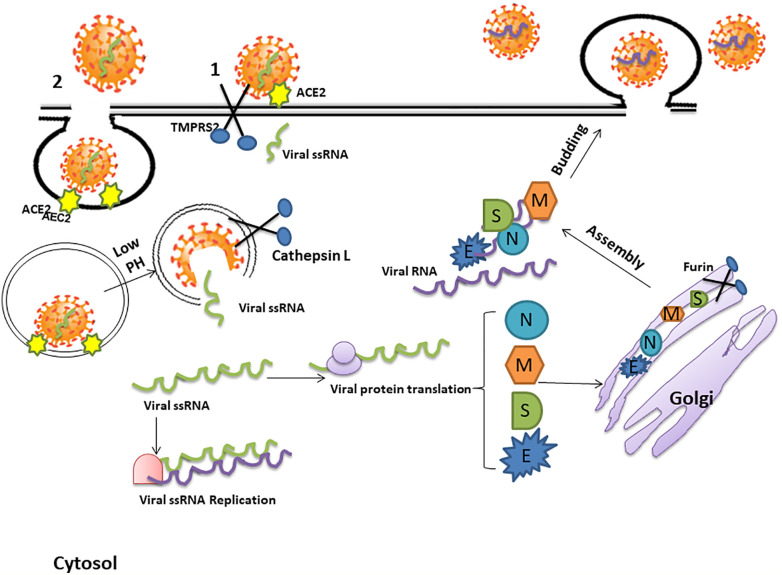Figure 3.
The mechanism of SARS-CoV-2 cell entry and replication. The coronavirus spike (S) protein binds to angiotensin converting enzyme 2 (ACE2) receptors. Cleavage of the S glycoprotein between the S1 and S2 domains, which begins during viral packaging by furin in the Golgi compartments, is completed by the protease trans-membrane serine Protease 2 (TMPRSS2) and lysosomal Cathepsin which enables cell membrane-viral fusion and viral RNA release. This process may either create a pore allowing the viral RNA and RNA-associated proteins to gain access to the cytoplasm (1) or, alternatively, the ACE2/SARS-CoV-2 complex may be internalized by endocytosis and be uncoated in the acidic lysosomal environment to enable release of the single stranded viral RNA (ssRNA) into the cytosol (2). The viral genome is then replicated and translated into viral proteins by the host cell machinery. The newly formed envelope glycoproteins are processed within the Golgi. Further assembling of the genomic RNA and nucleocapsid protein results in the formation of viral particles which are released via vesicular exocytosis.

